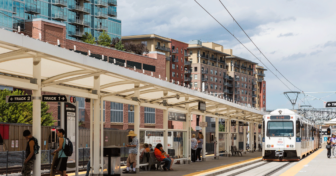Terrific article by Christopher Leinberger in this month’s Atlantic. It’s about the increased consumer demand – in both cities and suburbs – for walkable neighborhoods linked by train. The article and his book the Option of Urbanism are worth reading.
Leinberger is best in describing the changing patterns of consumer demand for housing and neighborhoods. As he would describe it from driveable suburbanism to walkable urbanism. He cites data that housing prices have fallen far more in outlying areas than near central cities in the current downturn. And that change in demand is likely to continue, probably accelerate.
He makes the case that rail transit is what makes these neighborhoods work. As he writes: Urban spaces of the kind that people want today feature mixed-use zoning and lots of stores and parks within walking distance. But most of all, they feature good public-transit options—usually rail lines.
Rail transit is a key ingredient to creating the kind of walkable neighborhoods consumers are demanding. And it’s those neighborhoods that are key to retaining and attracting talent that increasingly is the asset that matters most in growing a knowledge-based economy. In the article Leinberger has some interesting out-of the-box ideas on providing incentives to developers to pay for rail transit. Worth thinking about.
But so is a change in state transportation policy. Away from either letting our transportation system crumble (our current path) or more and more funding for new roads (the current proposals) and towards transit along with walking and biking. With an emphasis on rail. Hard to imagine our regrowing a prosperous Michigan without these kind of public investments.







